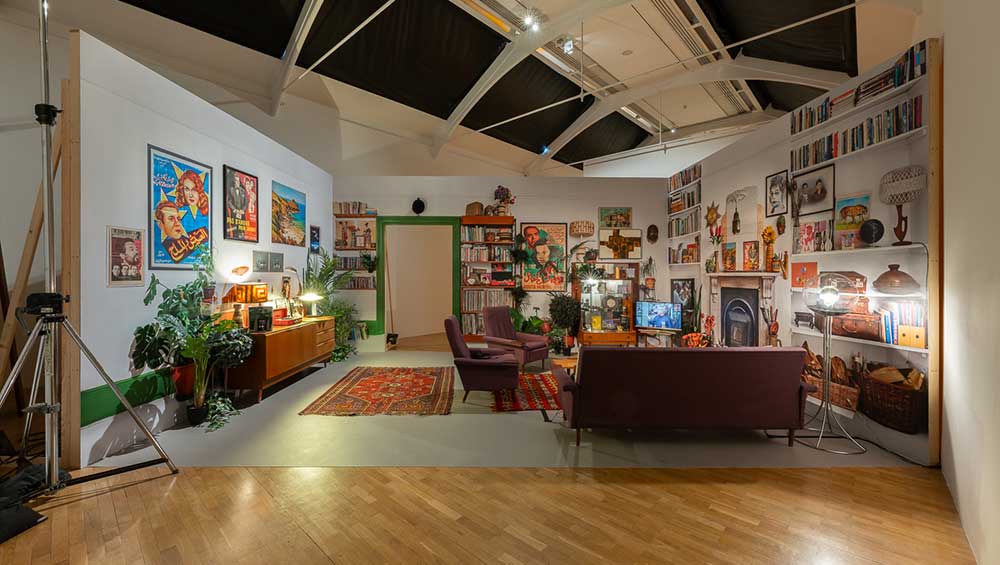
Zineb Sedira: Dreams Have No Titles, installation view, Whitechapel Gallery, London, 15 February – 12 May 2024. Courtesy Whitechapel Gallery. Photo: Damian Griffiths.
Whitechapel Gallery, London
15 February – 12 May 2024
by ANGERIA RIGAMONTI di CUTÒ
Dreams Have No Titles starts as it means to go on: enfolding us, without tedious preamble, into the artist’s real and fictive worlds, staged within a series of theatrical sets, some quoting specific films, others recreating domestic habitats of her intercultural life, replicated in absorbing detail. Zineb Sedira (b1963, Paris) is Franco-Algerian and a long-term Brixton resident, but it might be more enlightening to think of her culture and language as that of avant-garde cinema.
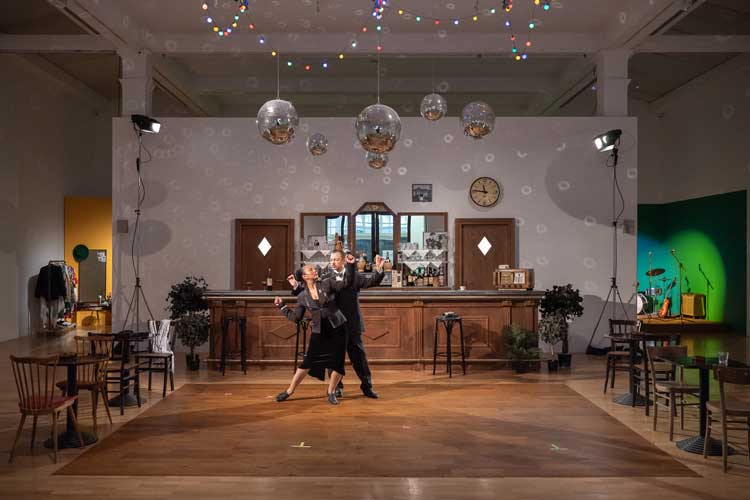
Zineb Sedira: Le Bal Tango Performance, installation view: Whitechapel Gallery, London, 15 February – 12 May 2024. Courtesy Whitechapel Gallery. Photo: Damian Griffiths.
Film is central to her world view, and art, in particular a series of mostly Italian, Algerian and French productions of the 1960s and 1970s (a selection of these is being shown in the Zineb Sedira Presents… screening programme). The debut of the exhibition is a recreation of the opening scene of Ettore Scola’s cinematic oddity, Le Bal (1983), a stylised spectacle distilling 50 years of European social and political history – including the Algerian war – into one night, through a sequence of vignettes in music and dance with no spoken dialogue. Crucially, the fact that this is a film set is made explicit with the presence of studio lights and the paraphernalia of film-making – editing suites, stacks of film canisters, dressing rooms, drawings of set designs, the cinema itself – is an important presence throughout the exhibition.
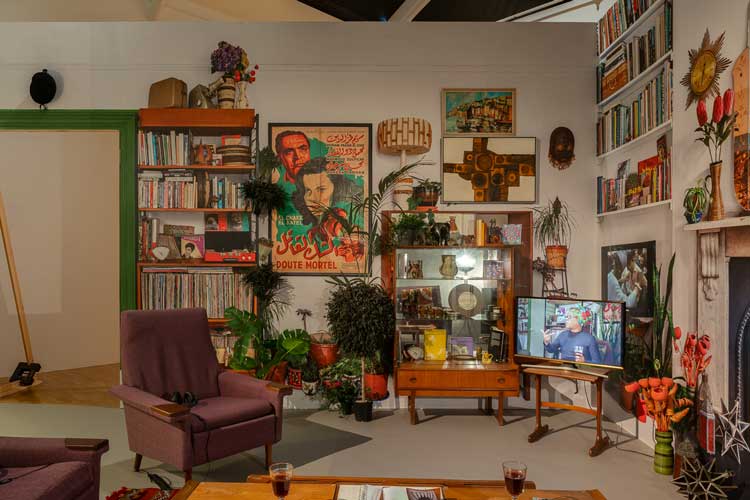
Zineb Sedira: Dreams Have No Titles, installation view, Whitechapel Gallery, London, 15 February – 12 May 2024. Courtesy Whitechapel Gallery. Photo: Damian Griffiths.
While the dance hall scene quotes Scola’s film, the entire show is a reiteration of Sedira’s acclaimed Dreams Have No Titles, presented at the French Pavilion of the 59th Venice Biennale in 2022. I didn’t see that version but imagine that the effects would be markedly different in Whitechapel compared with the self-contained, apart-from-the-world feel of the Giardini (further versions were installed in Korea and Germany, with another to be presented in October in Abu Dhabi).
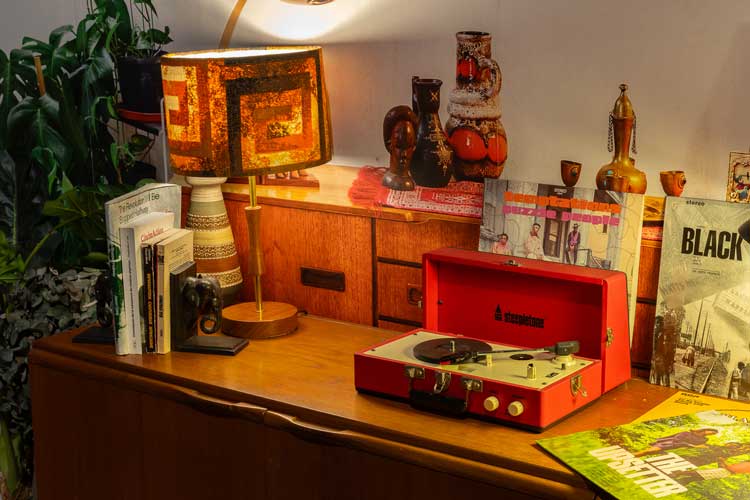
Zineb Sedira: Dreams Have No Titles, installation view, Whitechapel Gallery, London, 15 February – 12 May 2024. Courtesy Whitechapel Gallery. Photo: Damian Griffiths.
For one thing, London and its immigrant experience is a major locus in Sedira’s culturally hybrid universe, so to enter her world from the streets of the East End is satisfyingly and immediately resonant in a way than an international art fair could not be. One of the most absorbing set pieces is indeed the reproduction of her charismatically Almodóvarian living room in Brixton, the walls lined with vintage film posters, books and vinyl, partly a trompe-l’oeil facsimile, which makes some titles impossible to identify, perhaps the only flaw in a show where specific cultural references mean everything.
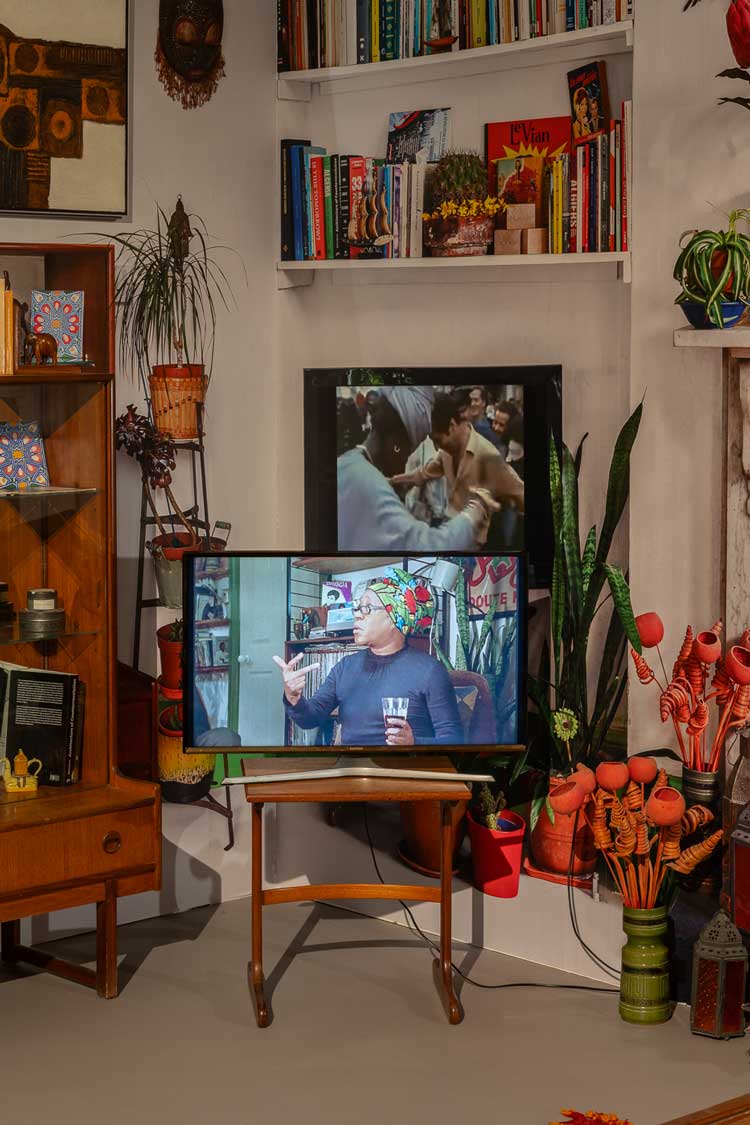
Zineb Sedira: Dreams Have No Titles, installation view, Whitechapel Gallery, London, 15 February – 12 May 2024. Courtesy Whitechapel Gallery. Photo: Damian Griffiths.
A TV set is tuned to a conversation between the curator Gilane Tawadros [now also director of Whitechapel Gallery] and Sonia Boyce, Sedira’s friend and former neighbour, discussing the world of squatting, housing co-ops and outsider solidarity in 1980s London. There are also suitcases, a leitmotif throughout that encapsulates the migrant experience, and a publication about the 1969 Pan-African Cultural Festival in Algiers rests on a coffee table, each artefact in this microcosmic living room a potent signifier of the artist’s identity.
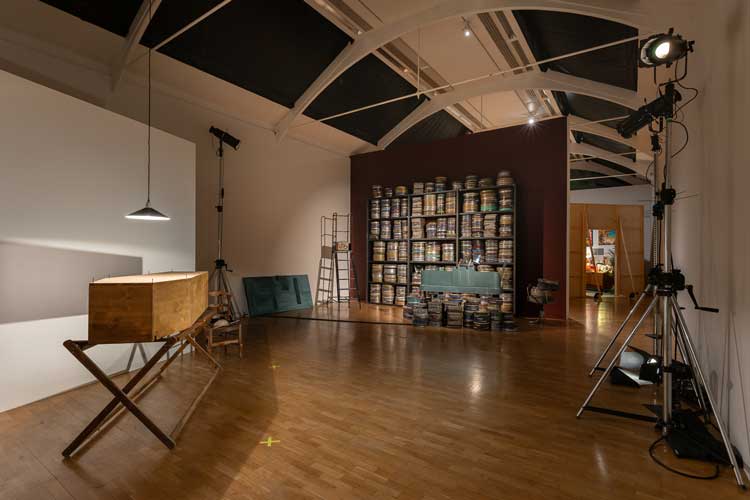
Zineb Sedira: Dreams Have No Titles, installation view, Whitechapel Gallery, London, 15 February – 12 May 2024. Courtesy Whitechapel Gallery. Photo: Damian Griffiths.
Other set pieces are bleaker: a stark coffin, pointing, typically for Sedira, to both the personal and political – a family tragedy, as well as a scene from Luchino Visconti’s Lo Straniero (1967), an adaptation of Albert Camus’s The Outsider (1942), set in Algeria under French colonial rule. In closing, we’re invited to sit in a small screening room with tip-up seats – a nod to the suburban Paris cinema assiduously frequented by Sedira and her father during her childhood.

Zineb Sedira: Dreams Have No Titles, installation view, Whitechapel Gallery, London, 15 February – 12 May 2024. Courtesy Whitechapel Gallery. Photo: Damian Griffiths.
Here, the short film, Dreams Have No Titles, offers a kind of oneiric coalescence of the artist’s themes and fascinations. There’s a reference to Orson Welles’s classic F For Fake, a ludic investigation of the slippery relationship between truth and artifice in art, with every story some kind of lie – Welles, incidentally, produced a radio play, Algiers (1939), based on the 1938 Hollywood film of the same name, in turn an adaptation of the hyperorientalist Pépé Le Moko (1937).
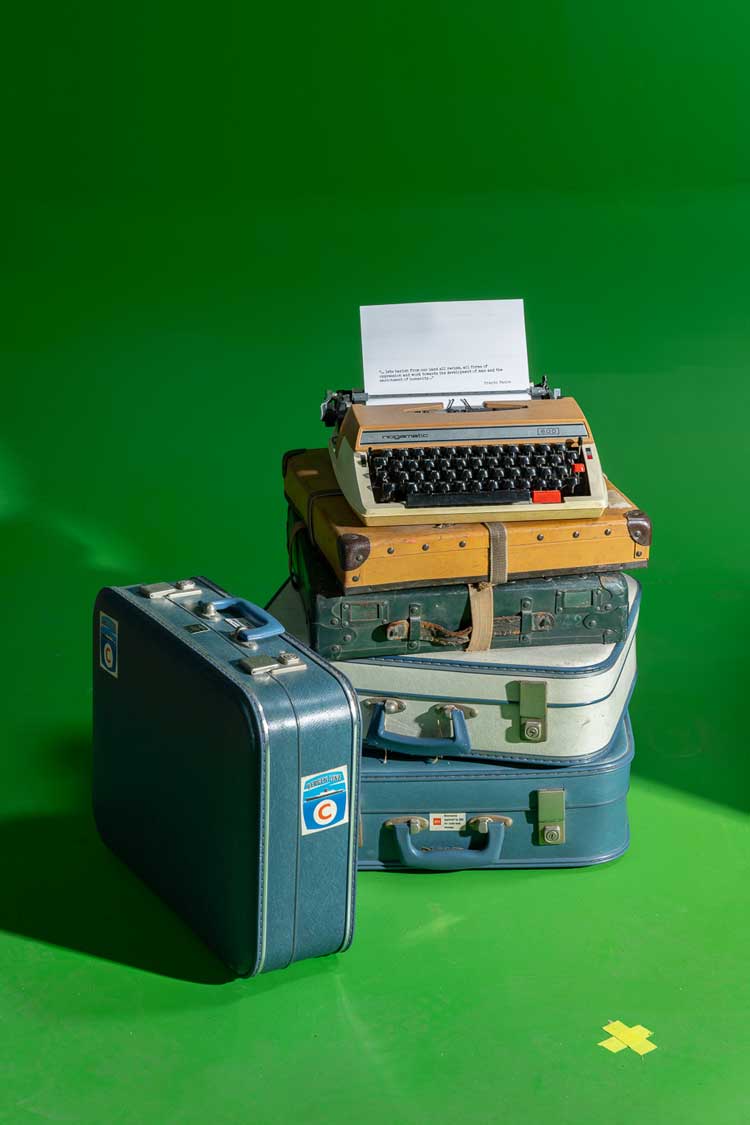
Zineb Sedira: Dreams Have No Titles, installation view, Whitechapel Gallery, London, 15 February – 12 May 2024. Courtesy Whitechapel Gallery. Photo: Damian Griffiths.
In her film, Sedira tells us she wants to recount “my story of cinema, avant-garde cinema,” a medium she sees as a form of resistance, survival and refuge. In addition to the recently restored Ennio Lorenzini colour film, Les Mains Libres (1962), Algeria’s first international production, there’s the towering presence here of Gillo Pontecorvo’s dispassionately brilliant Battle of Algiers (1966), also cited in one of the exhibition’s sets. It was not seen in France for years after its release – remnants of the far-right French dissident paramilitary and terrorist OAS (Organisation armée secrète) had threatened to bomb any cinema screening the film – but was eventually shown in 1971 with leftist students mounting guard. The political philosopher Frantz Fanon’s influence on Pontecorvo’s film was evident, and Sedira’s film includes readings from his text, A Dying Colonialism. A psychoanalyst by training, Fanon studied the psychological, as well as economic, damage inflicted by colonial war, developing his theory that revolutionary violence was justified and necessary.
The circumstances surrounding the selection of Sedira to represent France in the 2022 Biennale is testament to the way in which the conceptual threads running through this show are utterly current. In a statement to The Art Newspaper, she responded to rancorous criticism of her support for Palestine, amid calls for another artist to be nominated to create the French Pavilion: “As an Algerian-French woman, I have been given an opportunity, a voice to continue being critical of all forms of hatred and racism. I have decided to not renounce representing France at the next Venice Biennale, despite this attempt to silence me and infringe on my freedom of expression. What I was not prepared for was the level of discrimination and intimidation, in response to my nomination.”
That polemic echoed France’s fury when The Battle of Algiers was awarded the Golden Lion at the Venice Film Festival in 1966 and France accused Italy of giving the prize to a terrorist. Back in the near-present, the brutal history of colonial violence in Algeria was brought home with chillingly graphic force when, as recently as 2020, the skulls of 24 resistance fighters decapitated during France’s conquest were repatriated after lying in storage in a Paris museum – body parts as war trophies.
For all its explicit and implicit references to painful and vicious histories, it must be emphasised that Sedira’s multilayered environment is ultimately an adamant expression of an irrepressible joie de vivre: “Dancing,” she insists, while dancing to the closing credits of her film, “is still the tempo of my life.”
• Zineb Sedira Presents…, a free film programme selected by the artist to accompany her exhibition, is being screened at Whitechapel Gallery until 9 June 2024.